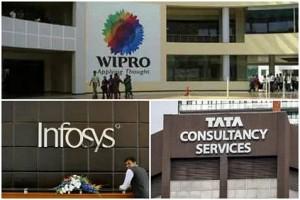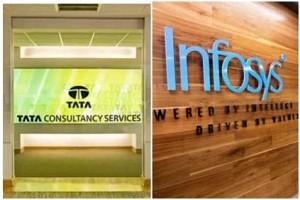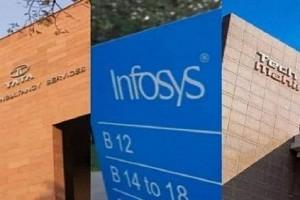Why 'Revenue per Employee' in TCS, Wipro, Infosys and other IT Companies are low despite Huge Growth? Details
Home > News Shots > Business newsThe Revenue per employee is an indicator which is used to measure employee productivity. It continues to be stagnant for IT services despite the rise in digital revenue over the past three years.

As per Industry experts, the inconsistency in what could be categorized as digital and pricing pressure are a few reasons why RPE is growing at a very slow pace.
The employee growth in the top four Indian IT service firms over the last three years substantiate the same.
According to Money Control’s report, Infosys’ RPE saw marginal growth and now stands at $54,000 on average between FY18 and FY20. TCS and Wipro’s RPE metric stood at $49,000 and $48,000. HCL Tech’s RPE is at $65,000 after an 8 percent increase compared to FY17. (RPE is calculated by dividing revenue by the total number of employees in each firm.)
Since the digital growth has increased by 20 percent over the years, the RPE is also expected to grow. Contrary to that, it hasn’t increased.
Why hasn’t the digital growth helped improve RPE?
Phil Ferst, CEO, HFS Research, an analyst firm, told Moneycontrol , “Digital revenues are meaningless since each provider is simply lumping all sorts of stuff in there.”
Although digital generally denotes revenue from new- age businesses such as cloud, products and platform services, the definition is subjective and varies from one company to another.
In TCS and Infosys, consulting, cloud, platforms and new age technologies are taken as part of digital revenue whereas Wipro on the other hand does not include business from consulting as a part of digital. For HCL Tech, products, platforms, IP and new- age services come under digital revenue.
According to Ferst, that could be the reason why it has not made a big impact. “RPA has had little impact on provider operating margins to date, where everyone is really struggling to scale these solutions outside of tasks and project-based initiatives,” he added.
Pricing pressure
The second problem is pricing. According to experts, pricing for digital projects are only slightly more than that of legacy projects and hence the margin is meagre.
Sangeeta Gupta, senior VP and chief strategy officer, NASSCOM, told Moneycontrol, that currently there is not much of a difference between traditional and digital businesses but she also added that the margin difference will increase.
“In digital, consulting is a high margin business and it will have operations, which is the implementation. This (implementation of digital) may not be significantly high margin but will be over a period of time as today the digital business is not very high compared to the traditional IT services.”
OTHER NEWS SHOTS








